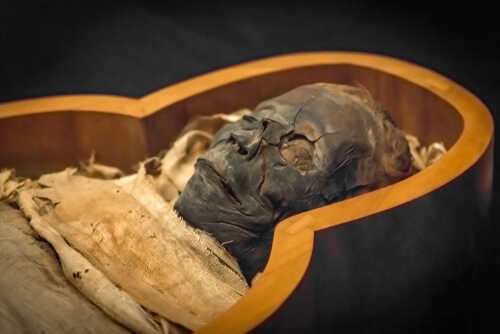(TheLibertyRevolution.com)- After a year of excavation, ancient artifacts were found near Saqqara, south of Cairo, that dated to the fifth and sixth dynasties of the Old Kingdom, between 2686 and 2181 B.C.
The finds were made public by the dig’s director and former minister of state for antiquities affairs of Egypt, archaeologist Zahi Hawass.
An ancient king’s secret keeper, a corpse coated in gold leaf, and tombs dating back 4,300 years were among the finds made in Egypt on Thursday.
Hekashepes was discovered in a limestone coffin down a roughly 50-foot hole.
According to Hawass, his bones were wrapped in gold, and he may be the oldest and most complete mummy ever discovered in Egypt. The mummy had stayed sealed just as the ancient Egyptians left it 4,300 years ago.
There was an engraving near the top of the tomb, and that is how archaeologists were aware of the name. The inscription read “HqA-Sps,” or Hekashepes,
According to Hawass, this mummy is the oldest non-royal one ever discovered in the nation and the oldest one ever found that was wrapped in gold leaf.
Hekashepes was undoubtedly a man of prominence given the style of burial he got, the archeologist surmised, adding, “Of course, he was significant. Someone must be a very significant guy if they can build a tomb like this 15 meters below.
Archaeologists labored painstakingly for two hours to lift the lid and reveal the remarkable find.
The “secret keeper” of the ancient ruler was found in another tomb. It was the second-largest tomb and belonged to Meri, who held numerous significant positions, including keeper of the secrets and assistant to the great commander of the palace, according to the previous antiquities minister.
A guy called Fetek, who was reputedly a judge and writer, was buried in another tomb.
Archaeologists also found 14 stone figures in a 33-foot hole along with the mummies.
This discovery, according to Hawass, “is the first time such a significant number of sculptures was uncovered in Saqqara in this century.”















